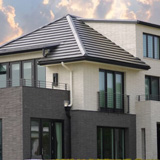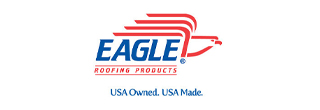
Sustainable Roofing: Building a Better Future
American Made. American Owned. Eagle Roofing Products is a division* of Burlingame Industries, a California based privately held, family-owned organization. From these family roots, our business philosophy and vision have blossomed. Founded three decades ago by Robert Burlingame, Eagle began operations in the fall of 1989 with just one high-pressure concrete tile extrusion machine located in Rialto, California. In a ten-year period, the Rialto plant serviced all of California, Arizona and Nevada with a capacity to produce concrete roof tile for over 83,000 homes per year. Fast forward to present day and Eagle’s Rialto facility continues to be the largest in North America. In addition to Rialto, we have manufacturing plants in Phoenix, Arizona, as well as Stockton, California and Sumterville, Florida meeting the demand for concrete roof tile across the United States and Canada. Furthermore, Eagle has grown to a workforce of over 800 employees that are knowledgeable in not only concrete roof tile but in regional trends and needs. Our expertise in the building and roofing industries, coupled by our extensive array of profiles and colors, enables us to provide our customers with high quality concrete roofing products that are aesthetically beautiful, long-lasting and environmentally friendly.
- Evaluate the environmental impacts of leading sloped roof materials, such as asphalt shingles and metal roofs, in relation to health, safety, and welfare considerations, occupant safety, and overall building performance.
- Describe how sustainable concrete roofs can support LEED v4.1 BD+C goals such as energy efficiency and material transparency.
- Explore how concrete roofs can help support LEED v4.1 BD+C resilient design goals and protect occupants from fire, high winds, extreme heat, and hailstorms.
- Discuss how sustainable concrete roofs advance LEED v4.1 BD+C circular economy goals through material recycling and landfill waste reduction strategies.
- Examine the performance and impacts of different roofing materials through case studies, focusing on their contributions to occupant safety, durability, and environmental welfare.





